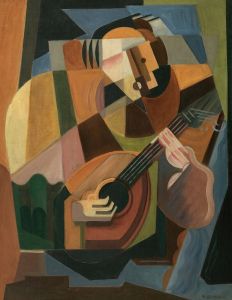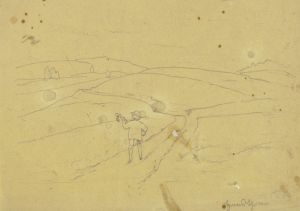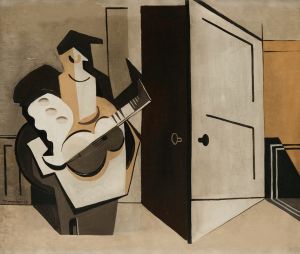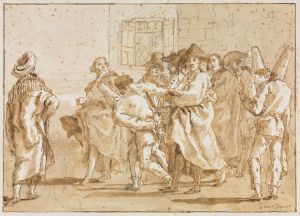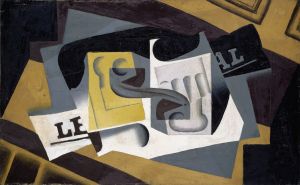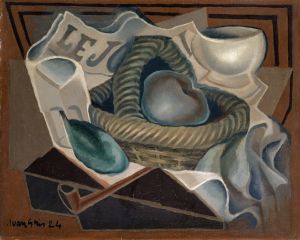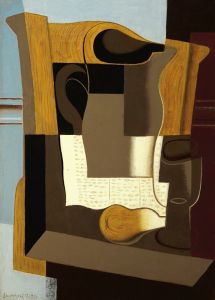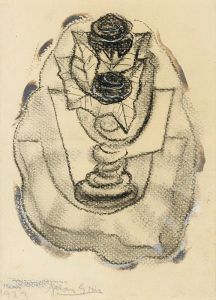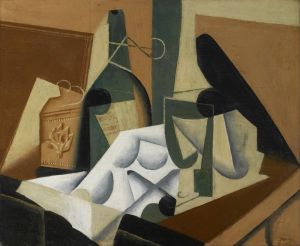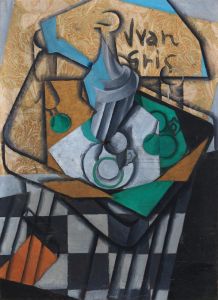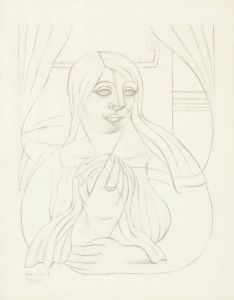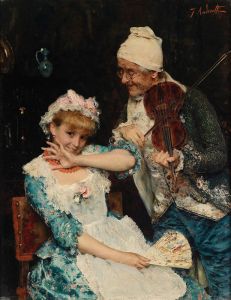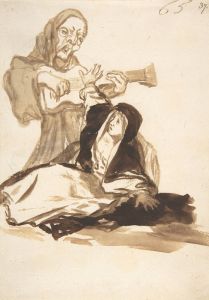
Harlequin with a Guitar
A hand-painted replica of Juan Gris’s masterpiece Harlequin with a Guitar, meticulously crafted by professional artists to capture the true essence of the original. Each piece is created with museum-quality canvas and rare mineral pigments, carefully painted by experienced artists with delicate brushstrokes and rich, layered colors to perfectly recreate the texture of the original artwork. Unlike machine-printed reproductions, this hand-painted version brings the painting to life, infused with the artist’s emotions and skill in every stroke. Whether for personal collection or home decoration, it instantly elevates the artistic atmosphere of any space.
"Harlequin with a Guitar" is a painting by the Spanish artist Juan Gris, a prominent figure in the Cubist movement. Gris, born José Victoriano González-Pérez in 1887, was known for his distinctive style that contributed significantly to the development of Cubism, a revolutionary art movement that emerged in the early 20th century. Cubism, pioneered by artists like Pablo Picasso and Georges Braque, sought to depict subjects from multiple viewpoints, thus challenging traditional perspectives in art.
Juan Gris created "Harlequin with a Guitar" in 1917, during a period when he was deeply engaged with the Cubist style. The painting exemplifies Gris's mature phase of Synthetic Cubism, characterized by a more structured and colorful approach compared to the earlier Analytical Cubism. Synthetic Cubism often involved simpler shapes and brighter colors, and Gris was particularly known for his use of vibrant palettes and geometric precision.
The subject of the painting, the harlequin, is a recurring motif in Gris's work, as well as in the works of other Cubist artists. The harlequin, a stock character from the Italian commedia dell'arte, is often depicted in a checkered costume and is associated with music, performance, and playfulness. In "Harlequin with a Guitar," Gris combines this theatrical figure with a musical instrument, the guitar, another common element in Cubist art. The guitar, with its distinct shape and cultural associations, provided artists like Gris with an opportunity to explore form and abstraction.
Gris's treatment of the harlequin and guitar in this painting reflects his interest in the interplay between flatness and depth, as well as his skill in balancing color and form. The composition is marked by overlapping planes and fragmented shapes, which are typical of Cubist works. Gris's use of color is particularly noteworthy; he employs a harmonious palette that enhances the visual rhythm of the painting.
"Harlequin with a Guitar" is not only a testament to Gris's mastery of Cubism but also an example of how he infused the movement with his unique sensibility. Unlike some of his contemporaries, Gris maintained a certain clarity and order in his compositions, which has been attributed to his background in technical drawing and his methodical approach to painting.
The painting is housed in the Museo Nacional Centro de Arte Reina Sofía in Madrid, Spain, where it is part of a collection that includes other significant works by Gris and his Cubist peers. The museum provides a context for understanding the evolution of modern art in the early 20th century, with Gris's work playing a crucial role in this narrative.
Juan Gris's contribution to Cubism and modern art is widely recognized, and "Harlequin with a Guitar" remains an important piece for both its artistic innovation and its reflection of the cultural milieu of the time. Through this painting, Gris not only explored the possibilities of form and color but also engaged with themes of identity and performance, which continue to resonate with audiences today.





